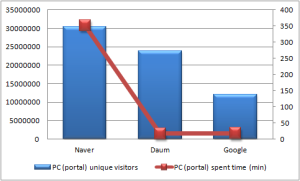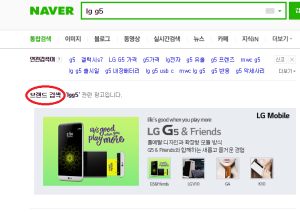Since ChatGPT’s inception two years ago, it has become a very controversial addition to many aspects of modern life. These days, more and more media is being produced and translated by ChatGPT in addition to traditionally used translation sites like Papago and Google Translate. Though a variety of different industries and individuals rely on translation providing applications everyday; there has always been an ongoing debate as to which websites can provide the best, and ultimately, most accurate translation service to their users. Through this article we will compare the abilities of these sites and to what degree they can be used to translate between English and Korean.
Below is a table comparing ChatGPT, Papago and DeepL.
| Feature | ChatGPT | Papago | DeepL |
| Speed | Fast, responds in real time, with real-time voice/conversation translation on mobile devices | Fast, especially with Papago Mini extension; ideal for quick, short translations | Moderate to fast |
| Accuracy | Good at capturing context, provides summaries; struggles with nuanced formal translations | Accurate, particularly with honorifics, but less adept with complex contexts compared to ChatGPT and DeepL | Highly accurate with strong context comprehension, especially for complex texts |
| Language specialization | Not specifically designed for translation | Focused on Korean, highly specialized for Korean translations | Specifically designed for translation, strong with Korean |
| Formalities & honorifics | Struggles with honorifics and formality in Korean | Handles honorifics and formalities best, includes toggle switch | Available in the paid version (DeepL Pro) |
| Customization | Requires specific prompts for best results; real-time voice input on mobile available | Offers dictionary integration for further clarification | DeepL Pro allows customization for honorifics and formality |
| Limitations | Prone to grammatical errors, outdated expressions; suited for context-heavy text over literal translations | Slower when accuracy is prioritized; ideal for quick translations with minimal context | Free version has character limits; paid version required for full access |
| Use case suitability | Suitable for fast, general translations, idea generation, and real-time conversation | Best for quick, short texts without needing deeper context | Excellent for professional, context-rich translations and document-level accuracy |
| Cost | Free | Free | Free version with limitations, paid version for additional features |
| User assistance | No direct user assistance in correcting outputs | Provides breakdowns and explanations, useful for beginners | No specific assistance, but high-quality contextual outputs |
| Document translation | Limited | No special document formatting support | Paid version supports full document translation with formatting retention |
| ChatGPT | Papago | DeepL |
ChatGPT
ChatGPT is an artificial intelligence chatbot-style website that is trained to follow a user-made prompt and provide a detailed humanlike response in real time. Despite only being around since 2022, the impact this platform has had on jobs, processes and research has been completely unprecedented than what was predicted upon its initial launch.
One of the benefits of AI powered translators is that these days more companies, such as in the gaming industry, have stated that they can opt to use ChatGPT for the bulk of their translation needs; resulting in them being able to economise by having translators proof-read rather than fully translating texts. Unlike in the tourism industry for example, industries such as gaming often have the same type of wordage and expressions appearing so it can make more sense for these companies to lean more heavily on websites like ChatGPT for ease of use and speed of translation.
ChatGPT essentially spits out relevant information already available on the internet which has been prompted by a user’s request. This makes ChatGPT an interesting resource for gathering information or for creating ideas, but it has never been designed or marketed as being strictly a translation resource. Among users, the most successful way ChatGPT can be used in a translation setting is for breaking down texts and providing a generalised summary of a text in another language.
Additionally, as language is nuanced and constantly changing there are so many areas of translation that this algorithm concept will fail to consider. Especially when ChatGPT tries to translate English into Korean it often struggles to consider honorifics and formalities, a fundamental part of the Korean language.
Google Translate
Google Translate was initially launched in 2006 and has been one of the most used and longest running translation websites, giving it credibility as a service in over 243 languages.
Much like ChatGPT, Google translate is fast and its usage is known to be used in situations when a general idea rather than translation clarity is appropriate. Google Translate is still a very popular choice for translation with reportedly 200 million users each day according to data published by CNET. Despite this, Google Translate has always equally been known for providing inaccurate translations and as a user experience, its algorithm feels dated when compared to other translation service sites. Google Translates’ translation system uses a method based on language pair frequency that does not take into account grammatical rules, resulting in the site frequently creating significant grammatical errors. This algorithm can also not distinguish well between words with double meanings which has famously led to many misunderstandings. It is easy to tell when text has been translated with Google translate because of this, with the hashtag ‘#googletranslatefail’ having over 1000 results on Instagram alone. According to the official rating by Translate Press, Google Translate’s accuracy and coherence when translating between Korean and English was a score of 82.5%; making it not an ideal choice for more complex Korean translation.
DeepL
DeepL has been regarded highly by its users since its initial launch seven years ago. Boasted as being the most accurate translation service with many researchers stating that it has a near 100% accuracy at translating the languages provided. Compared to other translation websites which are offshoots of search engines, DeepL was explicitly designed and trained for translation and for this reason, its translations are significantly better when it comes to transcribing more complex or diverse texts. DeepL is also ranked first in English-Korean and Korean-English services, making it a reliable option for both companies and individuals in need of accurate Korean translation outputs.
The main drawback of DeepL expressed by a lot of its users is the limitations of using the website. DeepL offers its users two versions of its translation service, the standard ‘free version’ which has a cap on the number of characters that can be translated and the second, paid version of DeepL called ‘DeepL Pro’. This premium version of DeepL has no limitations for the thirty languages that it can translate between. This paid version also offers its users the option of including honorifics when translating to Korean and can translate full documents while being able to retain the original formatting and design of the document.
Papago
Compared to all of the other translation websites featured in this article, Papago has proven itself to be comprehensive in terms of updates and regularly focuses its translation services around user experience. When using the Papago app, each user receives outputs that are uniquely broken down and explained with details, so by using Papago even complete beginners can check and adjust their inputs by this feature. Papago’s outputs are also able to launch ‘Naver Dictionary’, so if users want a further understanding of the output or want to confirm its usage or accuracy, they can use this function to see this word or expression in a variety of different context samples. The only disadvantage to this method of translation is searches by users need to be repeatedly altered to be exact. If you are not a language learner and are looking for methods to translate information, this method is by far the slowest and becomes like an individual lesson for each unique word or expression rather than just a quick and accurate output. To aid with speed of translation, Papago has recently introduced ‘Papago Mini’- a browser and app extension which when pressed will automatically translate while the user is creating or inputting text, resulting in quicker language processing.
Papago’s main usage upon its launch was for translating to and from the Korean language. Due to this, Papago handles honorifics the best out of all websites even from languages where this element doesn’t exist. In an update made to both the app and website there is even an honorific switch button so users can have more control over how their text will be translated and perceived by native speakers. This function has not yet been made available for English though so the translations made into English will have less accuracy then their Korean counterpart. This can result in Korean struggling to translate appropriately into English as tone, nuance and politeness is not as well defined in languages like English.
Overall, what people need from translation will reflect on their preference of translation apps or websites. Forums like ‘Hi native’ and ‘Naver blogs’ will always be not only more reliable but will remain more popular with people looking for seriously accurate translation as it has been requested, designed and regularly updated by human users. Forum style websites also accumulate a variety of users’ opinions of the correct translation of a word, phrase or term, creating an incredibly accurate translation platform.
In 2022, a test was conducted that analysed ChatGPT’s ability at translating Korean to English as an artificially intelligent program. ChatGPT was tasked by the ‘Korean Citation Index’ at making subtitles for the famous Korean movie ‘Minari’, released in 2021. The results showed that ChatGPT’s results were impressive when compared to previous data using chatbots. The results of this experiment also showed that when ChatGPT’s incorrect translations were altered by professional translators; the outputs were significantly enhanced. Following these findings, the Korean Citation Index has since stated that language learners should use the technology of ChatGPT as a translation tool to improve their own skills. Although the findings through this investigation do provide an impressive insight into the skills of ChatGPT’s abilities, the additional prompts to correct mistakes made by human translators make it an unreliable resource for people who need to casually translate information; if you are not fluent in both languages to spot mistakes it leads to the technology and the resulting findings being redundant.
It’s hard to give a single conclusion for the accuracy of all translation providing websites because it depends, in some parts, on the specific language pairs that you’re translating between. Ultimately, when translating between very different languages such as Korean and English, without the hands-on input from bilingual users, language translating services will always struggle to provide completely accurate translations due to how complex languages are in terms of more than just words. Translating tone, wordplay, history and slang will always be challenging to translate outside of the country and culture they were originally created in. We hope that through the information provided through this article that you can have all the information necessary when choosing platforms to translate between Korean and English.





